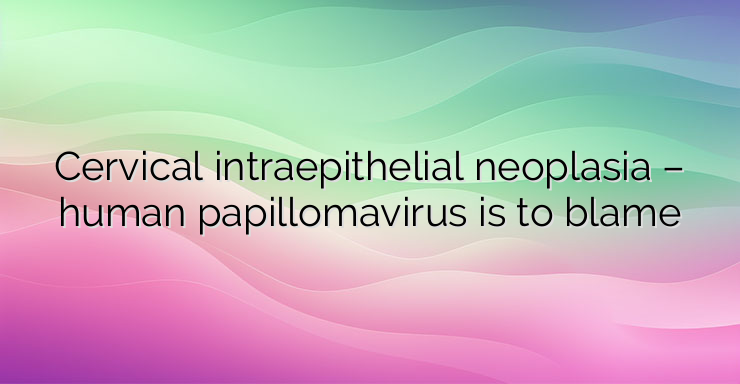Cervical intraepithelial neoplasia (CIN) is a precancerous condition in which abnormal cells grow on the surface of the cervix. The cervix is the opening between the vagina and the uterus. “Intraepithelial” means that the abnormal cells are present on the surface (epithelial tissue) of the cervix. The word “neoplasia” refers to the growth of new cells. Another name for CIN is cervical dysplasia. It is important to remember that most people with CIN do not develop cancer. If cancer does form, it takes years to develop, giving doctors time to find and remove problem areas. Cervical intraepithelial neoplasia can be classified according to how much epithelial tissue is affected: Low-grade neoplasia (CIN 1) refers to dysplasia that involves about one-third of the thickness of the epithelium. CIN 2 refers to abnormal changes in about one-third to two-thirds of the epithelial layer. CIN 3 (the most severe form) describes a condition that affects more than two-thirds of the epithelium. About 250,000 to 1 million women in the US are diagnosed with CIN each year. The condition is more common in women of childbearing age, especially between the ages of 25 and 35. Cervical intraepithelial neoplasia usually occurs after infection with human papillomavirus. It is a sexually transmitted virus. In many cases, the immune system will get rid of the virus on its own. There are over 100 strains of the human papillomavirus. Certain strains, such as HPV-16 and HPV-18, are more likely to infect the female reproductive tract and lead to cervical neoplasia. It is estimated that more than 75% of women who are sexually active are infected with human papillomavirus at some point in their lives. The reason why some women develop cervical intraepithelial neoplasia after human papillomavirus infection is still unknown. Certain high-risk strains of HPV and duration of infection may play a role. Other risk factors include: The woman’s age; Smoking; Use of immunosuppressants Factors that weaken the immune system and increase the risk of HPV infections include: A large number of sexual partners; Sexual activity before the age of 18; Human immunodeficiency virus (HIV) infection How can cervical intraepithelial neoplasia be prevented? Practicing safe sex is key to preventing human papillomavirus infection. The human papillomavirus vaccine is effective against the 4 types of HPV most closely associated with CIN. It is recommended that girls and women between the ages of 9 and 26 be vaccinated against HPV. The vaccine is also approved for boys and young men ages 9 to 26. For all women who lead a sexual life and women over the age of 21, the examination by taking material with a smear or the so-called is recommended. Pap test as part of routine annual screening.Pap smear cannot prevent cervical intraepithelial neoplasia, but it is a useful method because it can detect neoplasia in its earliest stages. Taking a Pap smear is a painless procedure. The woman is preparing for a gynecological examination. An instrument (speculum) is inserted to open the vagina to view the cervix. A brush is used to scrape the outside of the cervix and cervical canal, thus picking up surface cells. The cells are spread on a glass slide and stained, after which the material is viewed under a microscope and their shape and character are assessed. Source: my.clevelandclinic.org


Leave a Reply